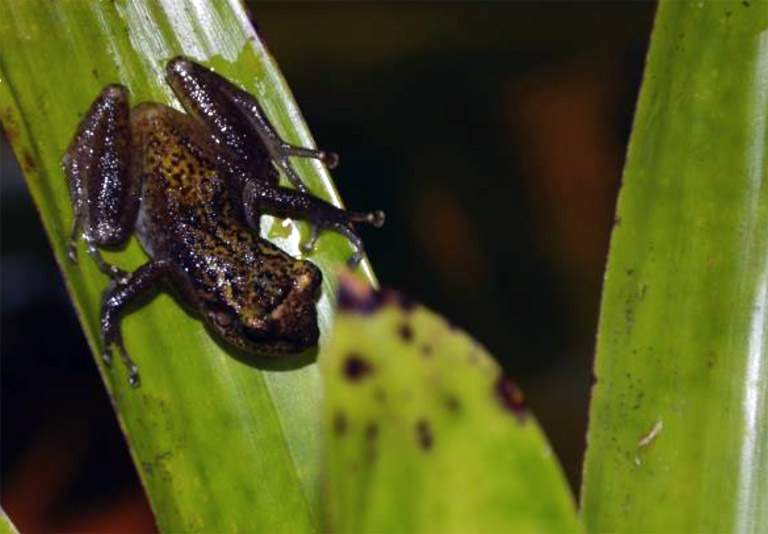- The conservation status of 38 amphibian species that had been previously determined to possibly meet IUCN criteria for being listed as Threatened species was re-assessed.
- Researchers found that the status of 14 of the 38 species should be changed.
- The major threat to the re-assessed amphibians is habitat loss due to logging and agriculture, with significant dangers presented by disease, pollution, and illegal harvesting for consumption and the pet trade.
Eight Peruvian amphibian species listed as Data Deficient by the IUCN should be re-assessed as Threatened. That’s one conclusion of a new study published in Mongabay’s journal Tropical Conservation Science.
The study re-assessed the conservation status of 38 amphibian species that an earlier study had determined might meet IUCN criteria for listing as Threatened species. The team of researchers, led by Laurence Jarvis of the Epping Forest Field Centre in Essex, UK, used criteria set out by the IUCN to take a fresh look at the species’ status.
They found that the status of 14 of the 38 species should be changed. The authors recommended that eight species should be moved from Data Deficient to Threatened; two should be changed from Data Deficient to Near Threatened and Least Concern, respectively, and a further two should move from Least Concern to Threatened. They also recommended down-listing two species from Endangered, to Near Threatened in one case and to Least Concern in another. In response to the study, the IUCN Red List updated the threat status of several of the reassessed species.

The scientists made their recommendations based on new knowledge about the species in question, rather than changes in the threats themselves. A lack of knowledge around Peru’s amphibians presents a major problem to conservation. Of the estimated 588 known amphibian species in Peru, nearly half of which cannot be found anywhere else in the world, the IUCN lists 140 as Data Deficient. Moreover, species are probably still out there waiting to be discovered, considering that 49 species were found in the country for the first time in less than five years between January 2010 and October 2014.
The major threat to the re-assessed amphibians is habitat loss due to logging and agriculture, with significant dangers presented by disease, pollution, and illegal harvesting for consumption and the pet trade, the paper asserts.
The researchers found that only half of the 38 species resided wholly or partly in protected areas. “This is consistent with recent findings at the global level. Considering that habitat loss is the main threat to amphibians in Peru, there is an urgent need to protect these species’ habitats,” the researchers write.
“Our research will enable conservation programmes and protection to target the specific needs of these species,” they write.

The researchers highlight three key areas for further research. First, ecological data must be gathered on the remaining Data Deficient species. Second, more information is required to understand the severity of threats facing the Endangered and Critically Endangered amphibian species. And finally, increased monitoring of several Least Concern species that appear to be at risk of becoming Near Threatened is needed.
In short, the researchers believe there are still significant gaps in the scientific knowledge that need to be filled. “Our findings indicate the continuing fragility of many Peruvian amphibians and highlight the need for improving their protection and for further research into their population status and threats,” they write.

Citation:
Lawrence J.E., Angulo A., Catenazzi A., von May R., Brown J.L., Lehr E., Lewis J. (2015). A re-assessment of priority amphibian species of Peru. Tropical Conservation Science 8(3):6 23-645.
